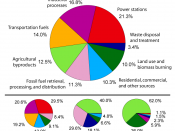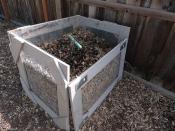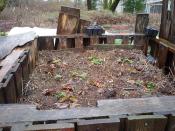Introduction
The amount of damage done to the environment by the Vancouver Landfill is a lot lower than it was ten years ago. An emphasis has been put on reducing the harming effects on the environment that the landfill produces. Leachate and landfill gases are taken care of properly as approximately 475,000 tonnes of municipal solid waste are put in the landfill every year. The Vancouver Landfill is 635 hectares; 235 hectares take up the landfill footprint which is located in Delta at 5400 72nd Street, and serves over 940,000 residents of various cities across the lower mainland.
Leachate Management
Leachate is when rainwater goes through the landfill garbage and runs off. Two ditches that are side by side surround the landfill. The ditches collect leachate and keep clean surface water from getting in the landfill. There are collection ditches that the leachate is moved to and this collection of leachate is pumped to the water treatment plant on Annacis Island.
Routine water quality checks take place to make sure the leachate collection system is working properly.
Landfill Gas
Anaerobic organisms are constantly eating the garbage at the landfill and they output methane and carbon dioxide as wastes. This methane, if left uncontrolled would be bad for the environment. Greenhouse gas emission is a major concern for the Vancouver Landfill and is appropriately taking care of the problem. Extraction wells have been placed all over the landfill and a pipe network connects them to a flare station. At the flare station, the gases are burned or used to create electricity to sell to BC Hydro or sold as heat to Hot House Growers. The amount of greenhouse gases that would be entering the atmosphere were they not controlled would be that of 80,000 automobiles per year. 5.5 million megawatts of...


